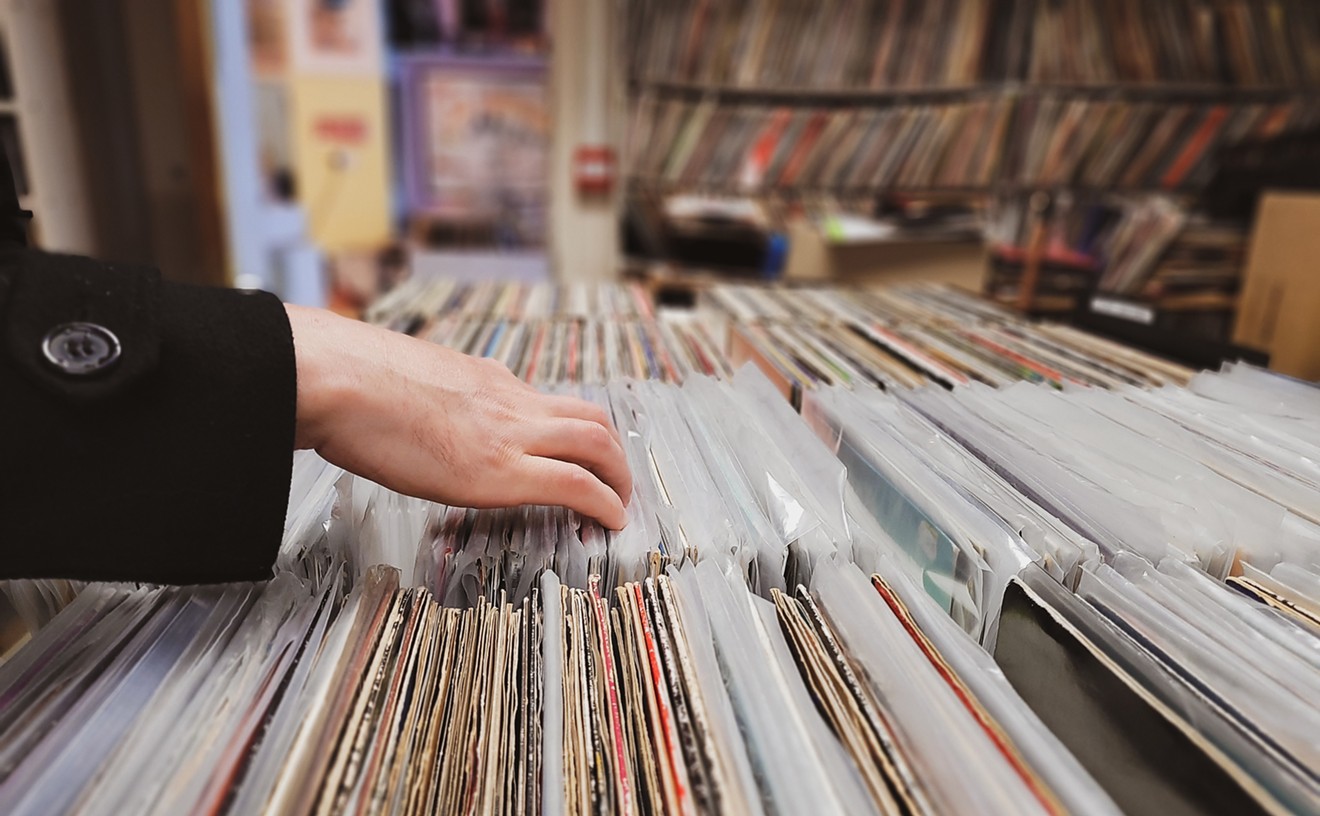It's debatable whether or not the puny graphics of CDs slowed the format's growth, but LP presentation is missed to this day. CDs, however, may be on the way to catching up with--or even exceeding--the impact of LP-art size, helped along several weeks ago when a federal court ruled in favor of Justice Record's Randall Jamail, allowing him to implement a process he invented that makes all the time on a CD--roughly 78 minutes--available to the consumer. Even better, it shouldn't cost an extra dime.
At least that's what Jamail, 39, the owner and president of Houston-based Justice, thinks. "If handled right," he says, "it should mean only extra music--or information--for the consumer." What he developed is the "Soundboard"--his name for the unused time on a CD, usually condensed into the "pregap," the space before the first cut. "It's a way to hide information on a CD, but out of the way," he says, explaining that the Soundboard can be accessed by rewinding back from track one into the pregap. (Some--particularly older--CD players may not be able to do this, however.) "You could have interviews, live versions, alternate takes...cryptic messages...anything."
"I can't tell you how many times an artist will be coming to the end of recording and say, 'But I still have some more,'" says Jamail, who has produced more than 100 albums. "This gives the artist a special place to put stuff, and the consumer gets something extra for his money. The consumer also gets control, because access to this new content--I like to think of it as a 'trap door' into the new environment--is discrete; I didn't want anything that would intrude on the listening process."
He elaborates. "It also helps close the distance between artist and fan. Recording always puts space into that relationship, by its very nature, and anytime you can hear the artist talking to you, you close that distance. It turns program notes into three-dimensional things, and bands love it."
It was an idea applauded everywhere but the offices of Sony and Phillips, developers--and owners--of the CD concept. Aspiring CD manufacturers pay the two multinationals roughly $50,000 for licensing and $.06 for every disc made; when setting up their shop, they had to hew religiously to what's called the "Red Book of Standards," the industry specs for how the operation should be set up and, not coincidentally, printed by Phillips and Sony. If a piece of equipment didn't appear in the Red Book, a production facility could be shut down, its output deemed substandard. When rebuffed in his efforts to get the Soundboard approved for the Red Book, Jamail took Sony and Phillips to court, alleging restraint of trade. It only took six months to settle.
"They knew," Jamail maintains, addressing the surprisingly fast resolution of the case. "They just didn't want to have to deal with it [being owned by another person]. I think they see the potential there, though--for everybody." Using the Soundboard will require no new equipment at either end; to fill it Jamail takes the material on Digital Audio Tape (DAT) and transfers the material on it to something called a 1630 master tape, which is the final tape used to make a CD; a 1630 looks like a big videotape cassette, with just a hint of steroid abuse. The 1630's payload is then encoded onto what is called a "glass master," the disc from which all others will be made. The encoding process fits the unused time--and the info now occupying its space--into the pregap.
"This is going to be given to the consumer for free," Jamail vows. "I'm going to license Soundboard for pennies a disc, and with CD pricing there's room for the record companies to absorb that. I'm really trying to hammer on the major labels," he says. "People have been bitchin' about the price of CDs for years, and if the labels are smart, they'll see this as a way to say 'We hear you.' Think of the Beatles anthologies coming out with outtakes and stuff on their Soundboards."
Soundboard isn't a CD-ROM; it can currently only store audio. But Sony and Phillips--not content with making us chuck all our vinyl and lay out $12 for Machine Head again--already are hard at work on what they call DVD (Digital Video Disc) technology, the (putative) next wave of disc media. Old CDs will be compatible with DVD, and Soundboard has been designed with a similar applicability in mind. "I'm designing a button for new CD players," Jamail reports, "that'll get you instant access to Soundboard, but that's the only equipment change that's involved; you'll still be able to back into the 'trap door' with [most] older players."
Jamail sees great potential for Soundboard in the DVD format, where images as well as sounds can be captured; DVD discs will have room on them for a full-length album and a full-length movie, and the fact that the images will be appearing on a computer video screen--rather than glued to a piece of stiff cardboard--might mean a comeback for intricate oh-wow-man album art, taken to new heights by digital opportunities.
"I want this to be very artist-driven," Jamail says. "I don't think people will stand for its misuse," he adds, disavowing Soundboard's seeming potential perfection for delivering advertising. "That's why I came up with that 'backing' feature and the special button, so that it wouldn't be like the ads and trailers in front of movies and video; you wouldn't have to sit through something in order to get to what you want."
Bugs Henderson--no doubt seeking to overcome some of the distance between artist and audience that Jamail mentioned--has already put some audio liner notes at the end of his new Four Tens Strike Again, and it does indeed make the listening experience more intimate; the only problem is that it's not exactly something you'd want to hear every time you play the album. Discs that utilize Soundboard technology--like Justice's Willie Nelson tribute, Twisted Willie, or the Royal Philharmonic's The Papal Concert to Commemorate the Holocaust--point up the desirability of leaving such addenda to the discretion of the listener. The only potential fly in the ointment is that the acceptance of the DVD format (remember minidiscs?) is far from certain; should it gain dominance, Jamail's invention has the potential to be a godsend for both listeners and players.
Street Beat welcomes your e-mail comments and information at [email protected].










